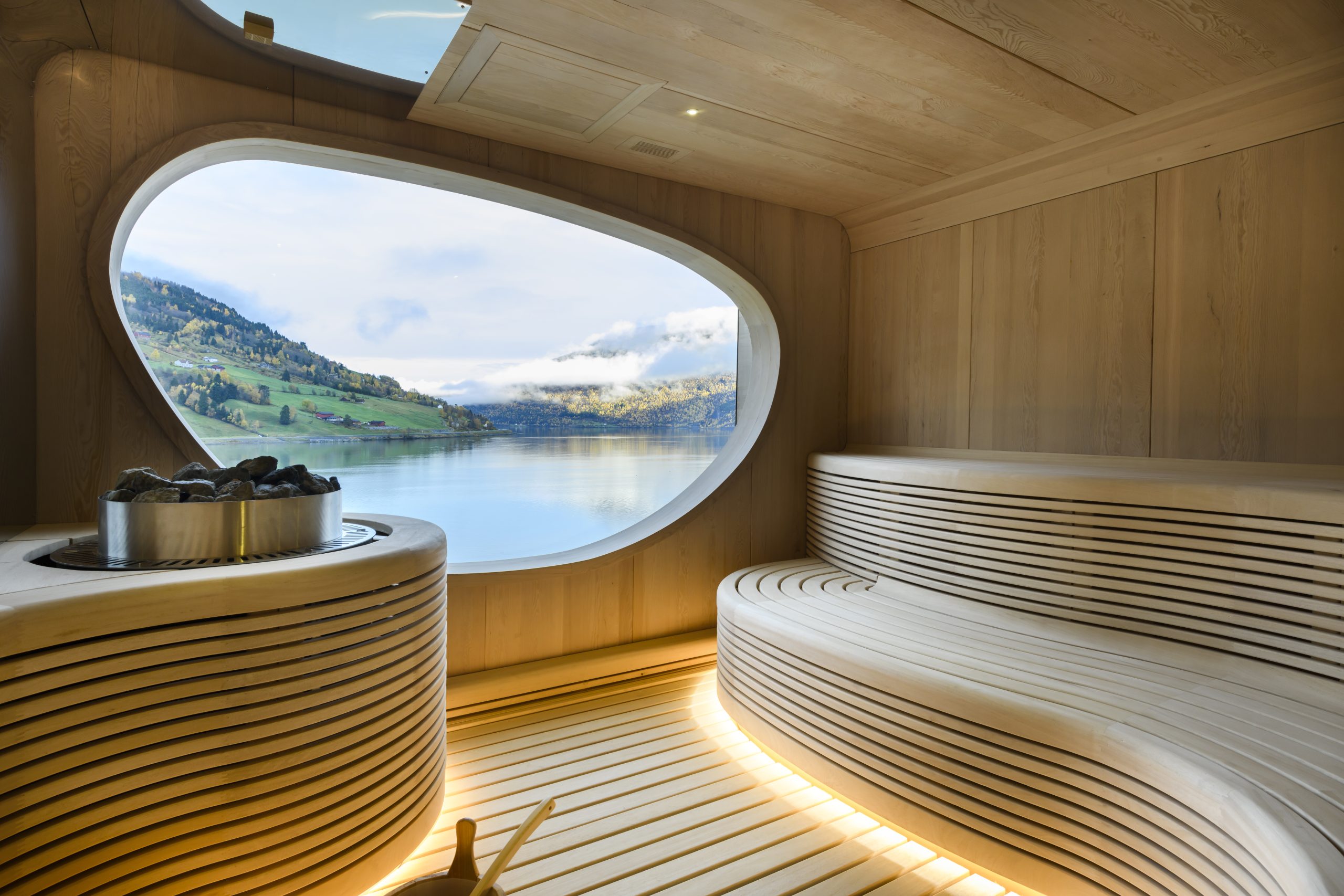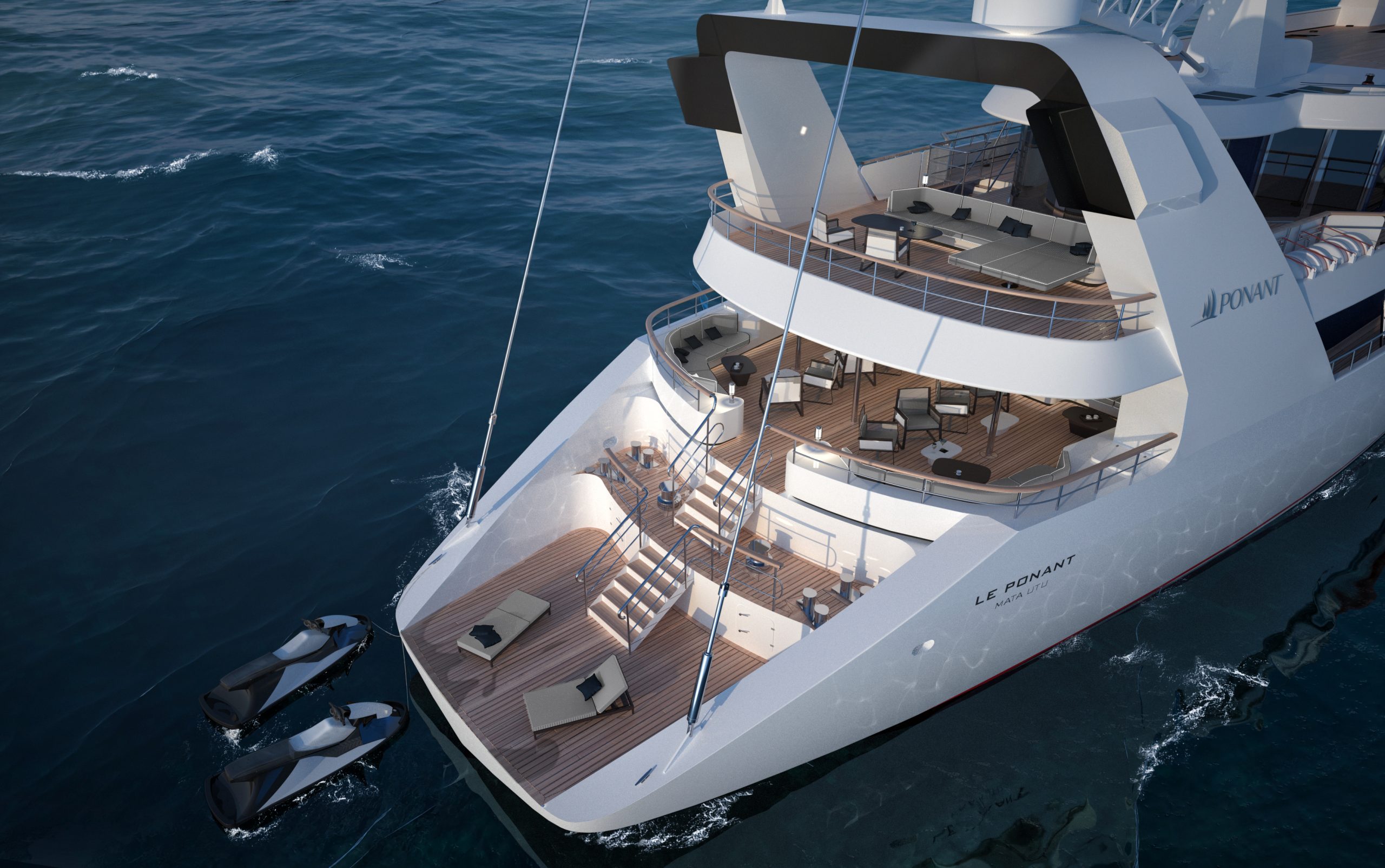Itinerary
Nothing can prepare you for your first sight of Dubrovnik. Lying 216 km (135 miles) southeast of Split and commanding a jaw-dropping coastal location, it is one of the world’s most beautiful fortified cities. Its massive stone ramparts and fortress towers curve around a tiny harbor, enclosing graduated ridges of sun-bleached orange-tiled roofs, copper domes, and elegant bell towers. Your imagination will run wild picturing what it looked like seven centuries ago when the walls were built, without any suburbs or highways around it, just this magnificent stone city rising out of the sea.In the 7th century AD, residents of the Roman city Epidaurum (now Cavtat) fled the Avars and Slavs of the north and founded a new settlement on a small rocky island, which they named Laus, and later Ragusa. On the mainland hillside opposite the island, the Slav settlement called Dubrovnik grew up. In the 12th century the narrow channel separating the two settlements was filled in (now the main street through the Old Town, called Stradun), and Ragusa and Dubrovnik became one. The city was surrounded by defensive walls during the 13th century, and these were reinforced with towers and bastions in the late 15th century.From 1358 to 1808 the city thrived as a powerful and remarkably sophisticated independent republic, reaching its golden age during the 16th century. In 1667 many of its splendid Gothic and Renaissance buildings were destroyed by an earthquake. The defensive walls survived the disaster, and the city was rebuilt in baroque style.Dubrovnik lost its independence to Napoléon in 1808, and in 1815 passed to Austria-Hungary. During the 20th century, as part of Yugoslavia, the city became a popular tourist destination, and in 1979 it was listed as a UNESCO World Heritage Site. During the war for independence, it came under heavy siege. Thanks to careful restoration, few traces of damage remain; however, there are maps inside the Pile and Ploče Gates illustrating the points around the city where damage was done. It’s only when you experience Dubrovnik yourself that you can understand what a treasure the world nearly lost
Off the coast of Croatia in the southern Adriatic Sea lie some thousand islands and the largest of them, Korçula, is considered the most beautiful. With an average of 3,000 hours of sunshine per annum, which guarantees a wide assortment of Mediterranean vegetation, it is not difficult to understand why seasoned travelers compare Korçula to a latter-day Eden. Separated from the mainland by a channel of only one mile, Korçula’s main town, named the same as the island, ranks among the best preserved medieval towns in the Mediterranean. It is the island’s main tourist, economic and cultural center. Thanks to its strategic location along the sea trade routes, Korçula has always attracted travelers and settlers. Korcula was founded by Greek colonists, who were followed by Illyrians, Romans and finally the Croats. The Korçula Statute of 1214 is one of the oldest legal documents to have been adopted in this part of Europe. The same century saw the birth of the famous world traveler, Marco Polo. The house said to be his birthplace can be seen in town. Korçulans have always been known as keen seafarers, excellent shipbuilders, stonemasons and artists. From their many voyages, sailors brought back new ideas, which eventually mixed with local customs. To this day, Korçula has maintained the tradition of performing knightly games such as the chivalrous Moreska dance, which has been in existence for more than 400 years. Visitors to Korçula enjoy its stunning location, natural beauty and medieval ambiance. And if that’s not enough, the town offers numerous attractions that are within walking distance from the pier, including the City Museum and the Bishop’s Treasury.
The Croatian island of Hvar bills itself as the “sunniest island in the Adriatic.” Not only does it have the figures to back up this claim—an annual average of 2,724 hours of sunshine—but it also makes visitors a sporting proposition, offering them a money-back guarantee if there are seven consecutive days of snow (snow has been known to fall here; the last time being February 2012).
Lush, relaxed island resort with beaches, water sports, wine-making, bike rentals & hotels.
Nothing can prepare you for your first sight of Dubrovnik. Lying 216 km (135 miles) southeast of Split and commanding a jaw-dropping coastal location, it is one of the world’s most beautiful fortified cities. Its massive stone ramparts and fortress towers curve around a tiny harbor, enclosing graduated ridges of sun-bleached orange-tiled roofs, copper domes, and elegant bell towers. Your imagination will run wild picturing what it looked like seven centuries ago when the walls were built, without any suburbs or highways around it, just this magnificent stone city rising out of the sea.In the 7th century AD, residents of the Roman city Epidaurum (now Cavtat) fled the Avars and Slavs of the north and founded a new settlement on a small rocky island, which they named Laus, and later Ragusa. On the mainland hillside opposite the island, the Slav settlement called Dubrovnik grew up. In the 12th century the narrow channel separating the two settlements was filled in (now the main street through the Old Town, called Stradun), and Ragusa and Dubrovnik became one. The city was surrounded by defensive walls during the 13th century, and these were reinforced with towers and bastions in the late 15th century.From 1358 to 1808 the city thrived as a powerful and remarkably sophisticated independent republic, reaching its golden age during the 16th century. In 1667 many of its splendid Gothic and Renaissance buildings were destroyed by an earthquake. The defensive walls survived the disaster, and the city was rebuilt in baroque style.Dubrovnik lost its independence to Napoléon in 1808, and in 1815 passed to Austria-Hungary. During the 20th century, as part of Yugoslavia, the city became a popular tourist destination, and in 1979 it was listed as a UNESCO World Heritage Site. During the war for independence, it came under heavy siege. Thanks to careful restoration, few traces of damage remain; however, there are maps inside the Pile and Ploče Gates illustrating the points around the city where damage was done. It’s only when you experience Dubrovnik yourself that you can understand what a treasure the world nearly lost
Nothing can prepare you for your first sight of Dubrovnik. Lying 216 km (135 miles) southeast of Split and commanding a jaw-dropping coastal location, it is one of the world’s most beautiful fortified cities. Its massive stone ramparts and fortress towers curve around a tiny harbor, enclosing graduated ridges of sun-bleached orange-tiled roofs, copper domes, and elegant bell towers. Your imagination will run wild picturing what it looked like seven centuries ago when the walls were built, without any suburbs or highways around it, just this magnificent stone city rising out of the sea.In the 7th century AD, residents of the Roman city Epidaurum (now Cavtat) fled the Avars and Slavs of the north and founded a new settlement on a small rocky island, which they named Laus, and later Ragusa. On the mainland hillside opposite the island, the Slav settlement called Dubrovnik grew up. In the 12th century the narrow channel separating the two settlements was filled in (now the main street through the Old Town, called Stradun), and Ragusa and Dubrovnik became one. The city was surrounded by defensive walls during the 13th century, and these were reinforced with towers and bastions in the late 15th century.From 1358 to 1808 the city thrived as a powerful and remarkably sophisticated independent republic, reaching its golden age during the 16th century. In 1667 many of its splendid Gothic and Renaissance buildings were destroyed by an earthquake. The defensive walls survived the disaster, and the city was rebuilt in baroque style.Dubrovnik lost its independence to Napoléon in 1808, and in 1815 passed to Austria-Hungary. During the 20th century, as part of Yugoslavia, the city became a popular tourist destination, and in 1979 it was listed as a UNESCO World Heritage Site. During the war for independence, it came under heavy siege. Thanks to careful restoration, few traces of damage remain; however, there are maps inside the Pile and Ploče Gates illustrating the points around the city where damage was done. It’s only when you experience Dubrovnik yourself that you can understand what a treasure the world nearly lost
Ship features
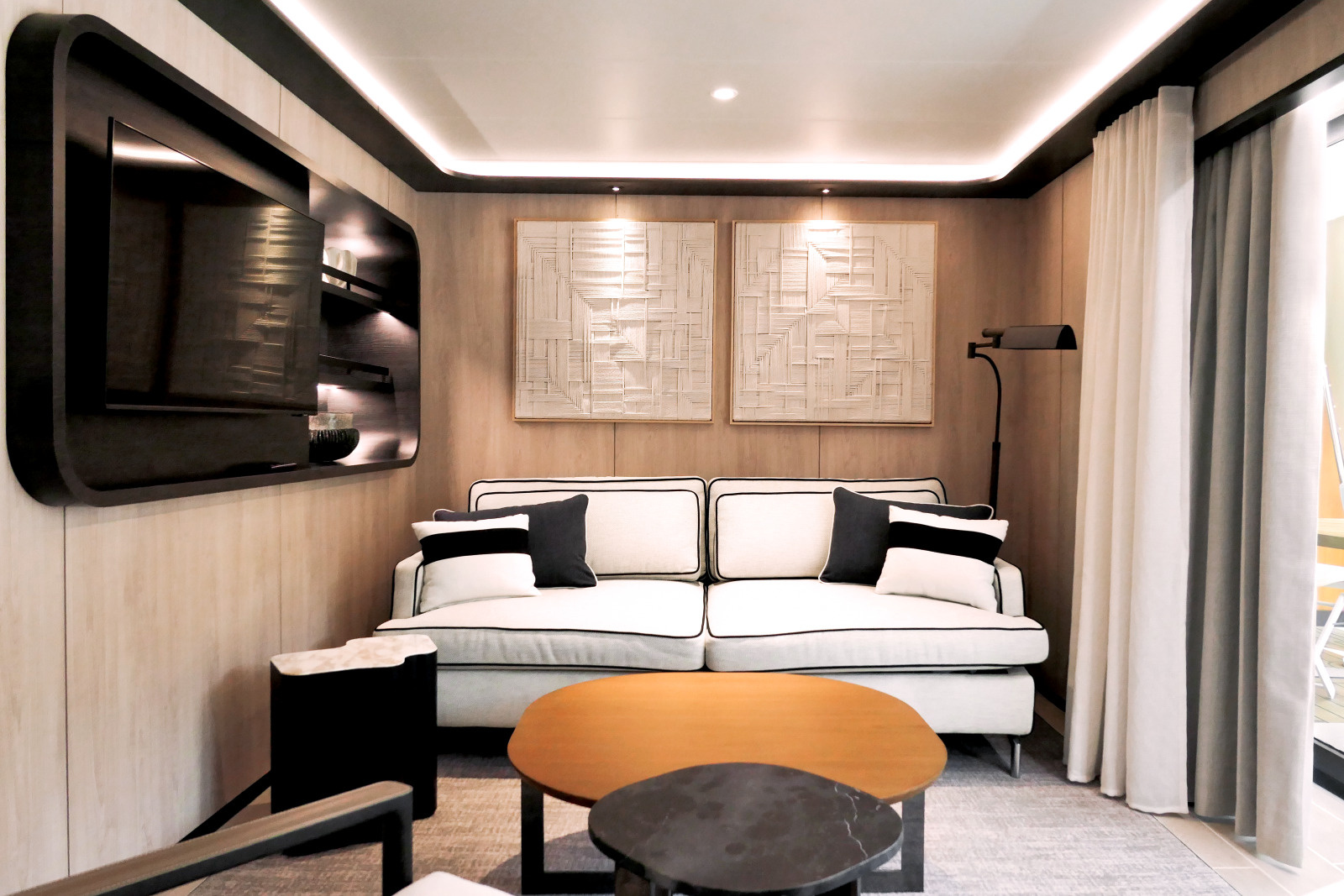
Owner's Suite with balcony
- Individually controlled air conditioning
- Double bed (180 cm x 200 cm) or twin single beds (90 cm x 200 cm), depending on the cabin; adjoining cabins available (for child-friendly cruises)
- Mini bar
- Flat screen TV, satellite channels
- Bose™ Bluetooth Speaker
- Desk with writing supplies
- Electronic safe
- Selection of Dyptique Paris bath products
- Dressing table and hairdryer
- Direct phone line via satellite
- 110/220 volt outlets
- 24-hour room service
- Unlimited free Wi-Fi

Alizé Privilège Suite with balcony
- Individually controlled air conditioning
- Double bed (180 cm x 200 cm) or twin single beds (90 cm x 200 cm), depending on the cabin; adjoining cabins available (for child-friendly cruises)
- Mini bar
- Flat screen TV, satellite channels
- Bose™ Bluetooth Speaker
- Desk with writing supplies
- Electronic safe
- Selection of Dyptique Paris bath products
- Dressing table and hairdryer
- Direct phone line via satellite
- 110/220 volt outlets
- 24-hour room service
- Unlimited free Wi-Fi
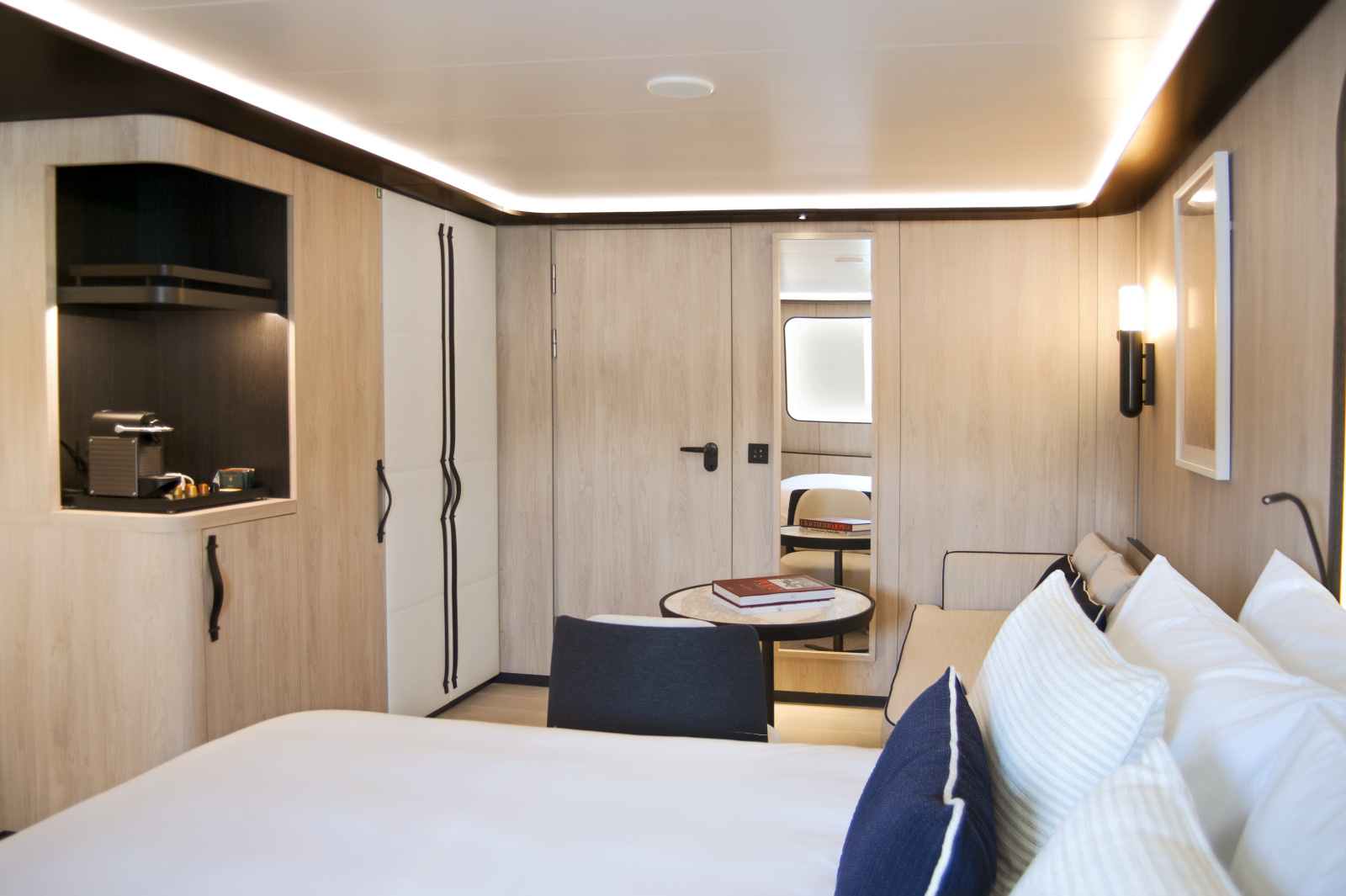
Mistral Junior Suite
- Individually controlled air conditioning
- Double bed (180 cm x 200 cm) or twin single beds (90 cm x 200 cm), depending on the cabin; adjoining cabins available (for child-friendly cruises)
- Mini bar
- Flat screen TV, satellite channels
- Bose™ Bluetooth Speaker
- Desk with writing supplies
- Electronic safe
- Selection of Dyptique Paris bath products
- Dressing table and hairdryer
- Direct phone line via satellite
- 110/220 volt outlets
- 24-hour room service
- Unlimited free Wi-Fi
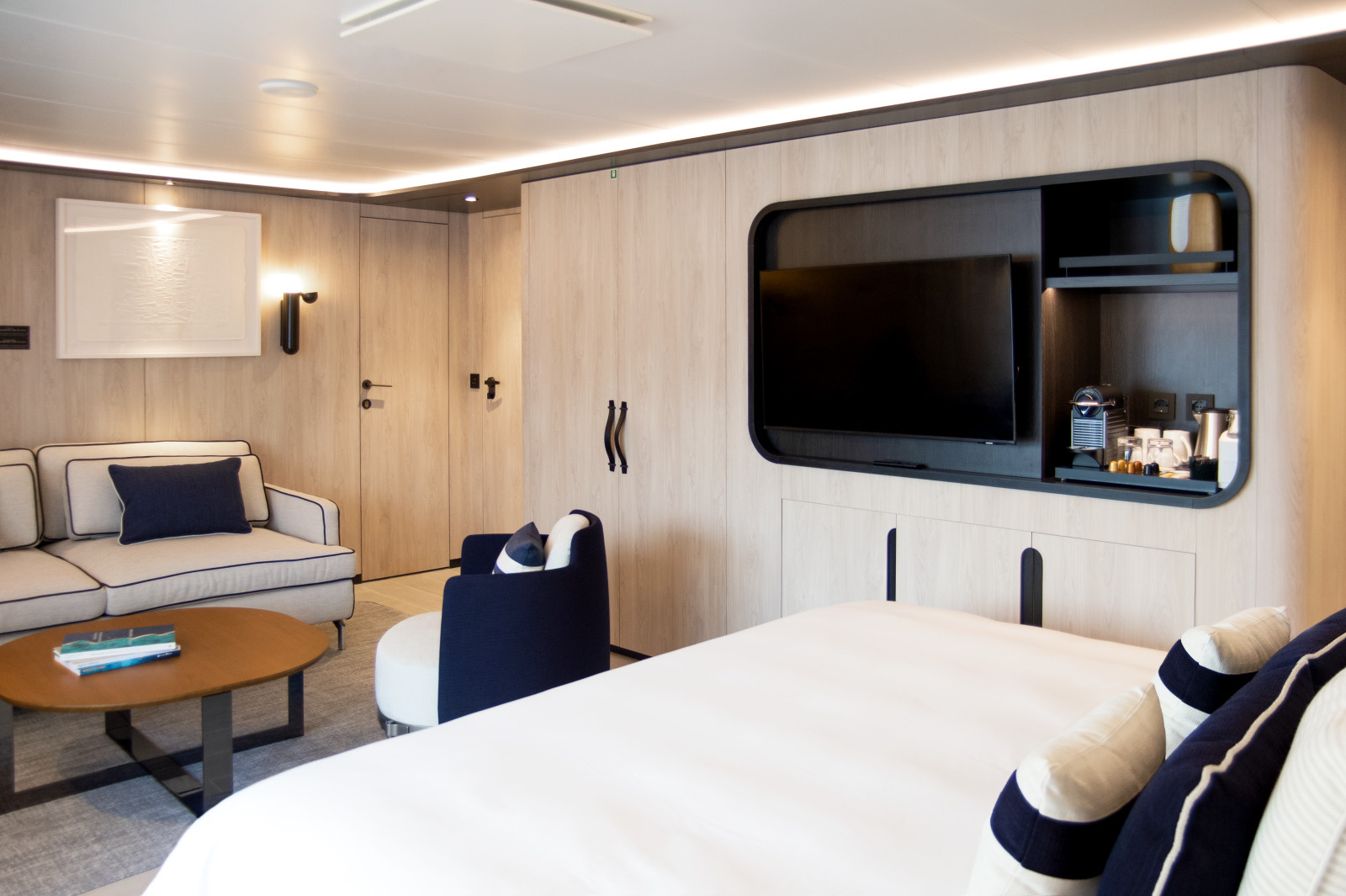
Grand Privilège Alizé Suite with balcony
- Individually controlled air conditioning
- Double bed (180 cm x 200 cm) or twin single beds (90 cm x 200 cm), depending on the cabin; adjoining cabins available (for child-friendly cruises)
- Mini bar
- Flat screen TV, satellite channels
- Bose™ Bluetooth Speaker
- Desk with writing supplies
- Electronic safe
- Selection of Dyptique Paris bath products
- Dressing table and hairdryer
- Direct phone line via satellite
- 110/220 volt outlets
- 24-hour room service
- Unlimited free Wi-Fi
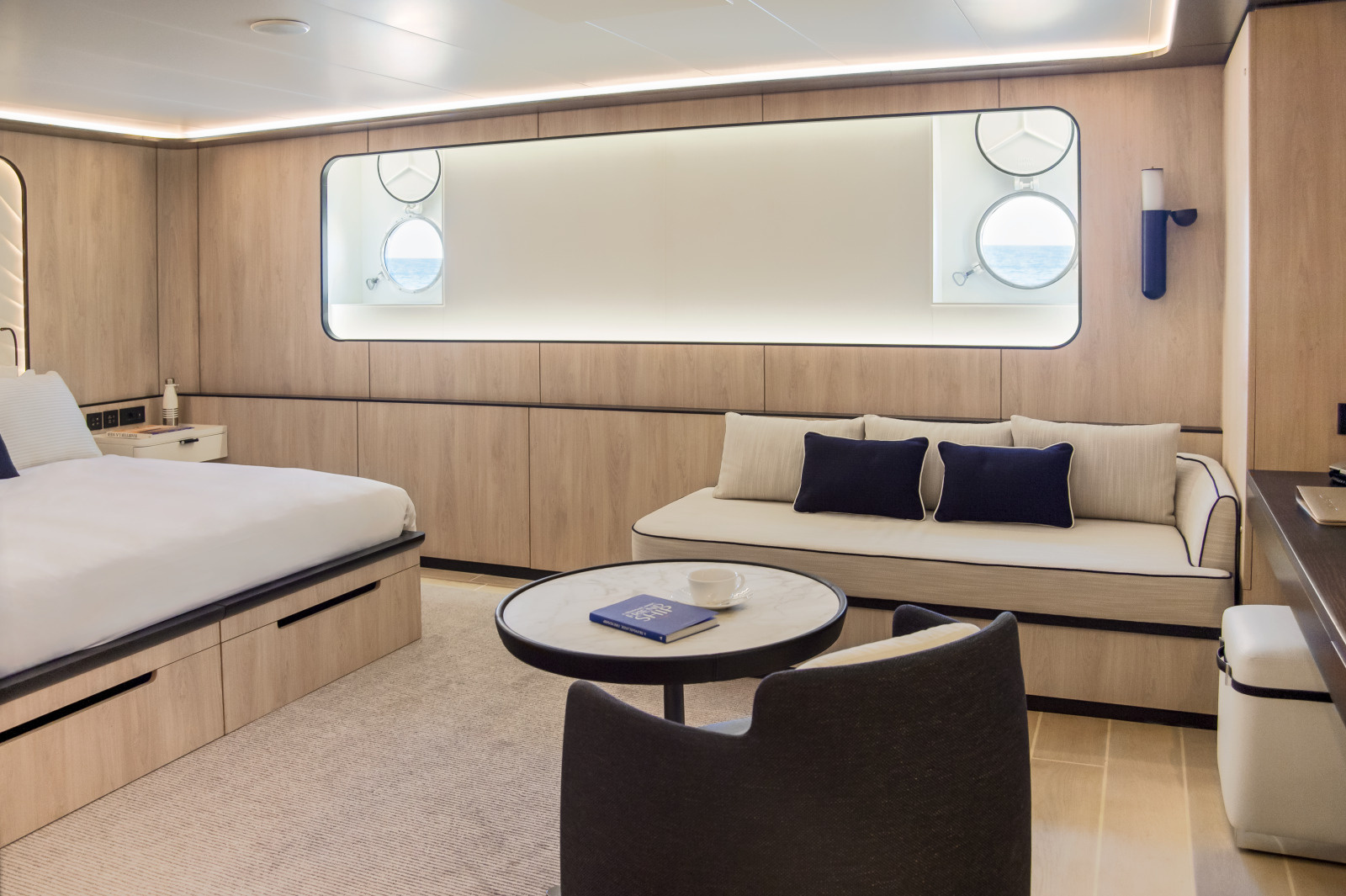
Mistral Prestige Suite
- Individually controlled air conditioning
- Double bed (180 cm x 200 cm) or twin single beds (90 cm x 200 cm), depending on the cabin; adjoining cabins available (for child-friendly cruises)
- Mini bar
- Flat screen TV, satellite channels
- Bose™ Bluetooth Speaker
- Desk with writing supplies
- Electronic safe
- Selection of Dyptique Paris bath products
- Dressing table and hairdryer
- Direct phone line via satellite
- 110/220 volt outlets
- 24-hour room service
- Unlimited free Wi-Fi

Alizés Prestige Stateroom with balcony
- Individually controlled air conditioning
- Double bed (180 cm x 200 cm) or twin single beds (90 cm x 200 cm), depending on the cabin; adjoining cabins available (for child-friendly cruises)
- Mini bar
- Flat screen TV, satellite channels
- Bose™ Bluetooth Speaker
- Desk with writing supplies
- Electronic safe
- Selection of Dyptique Paris bath products
- Dressing table and hairdryer
- Direct phone line via satellite
- 110/220 volt outlets
- 24-hour room service
- Unlimited free Wi-Fi

Mistral Prestige Stateroom
- Individually controlled air conditioning
- Double bed (180 cm x 200 cm) or twin single beds (90 cm x 200 cm), depending on the cabin; adjoining cabins available (for child-friendly cruises)
- Mini bar
- Flat screen TV, satellite channels
- Bose™ Bluetooth Speaker
- Desk with writing supplies
- Electronic safe
- Selection of Dyptique Paris bath products
- Dressing table and hairdryer
- Direct phone line via satellite
- 110/220 volt outlets
- 24-hour room service
- Unlimited free Wi-Fi

Mistral Stateroom
- Individually controlled air conditioning
- Double bed (180 cm x 200 cm) or twin single beds (90 cm x 200 cm), depending on the cabin; adjoining cabins available (for child-friendly cruises)
- Mini bar
- Flat screen TV, satellite channels
- Bose™ Bluetooth Speaker
- Desk with writing supplies
- Electronic safe
- Selection of Dyptique Paris bath products
- Dressing table and hairdryer
- Direct phone line via satellite
- 110/220 volt outlets
- 24-hour room service
- Unlimited free Wi-Fi

Alizé Stateroom with balcony
- Individually controlled air conditioning
- Double bed (180 cm x 200 cm) or twin single beds (90 cm x 200 cm), depending on the cabin; adjoining cabins available (for child-friendly cruises)
- Mini bar
- Flat screen TV, satellite channels
- Bose™ Bluetooth Speaker
- Desk with writing supplies
- Electronic safe
- Selection of Dyptique Paris bath products
- Dressing table and hairdryer
- Direct phone line via satellite
- 110/220 volt outlets
- 24-hour room service
- Unlimited free Wi-Fi
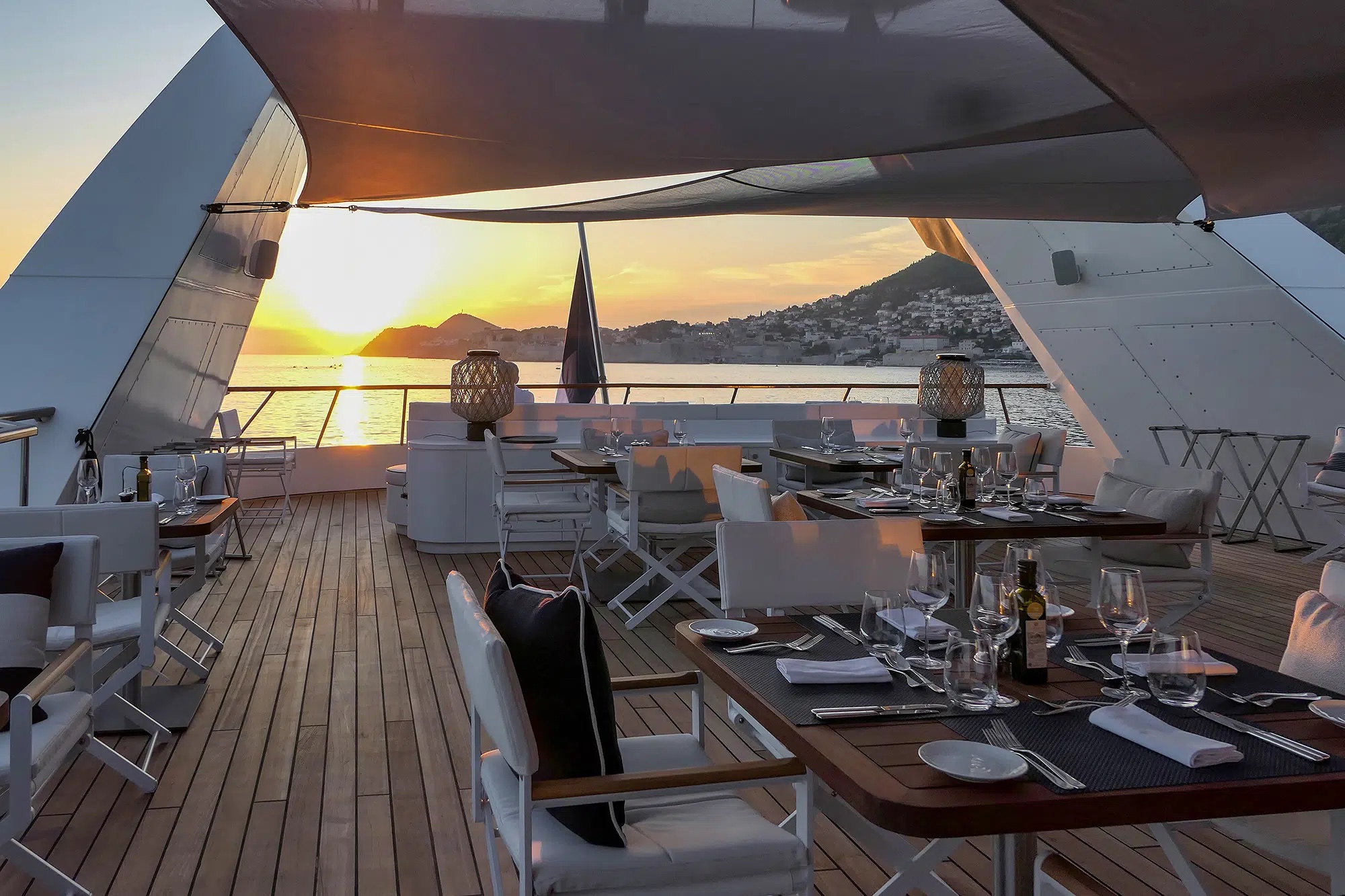
Le Diamant Panoramic Restaurant
Located on the Zéphyr Deck, Le Diamant Restaurant offers a delicious buffet for breakfast and lunch.
- Seats 34 guests
- 61 m²
- Buffet breakfast and dinner
- Fine gastronomic cuisine made using exceptionally high quality organic and local products
- Veuve Clicquot champagne
- Wines from French artisan wine producers and the regions visited.
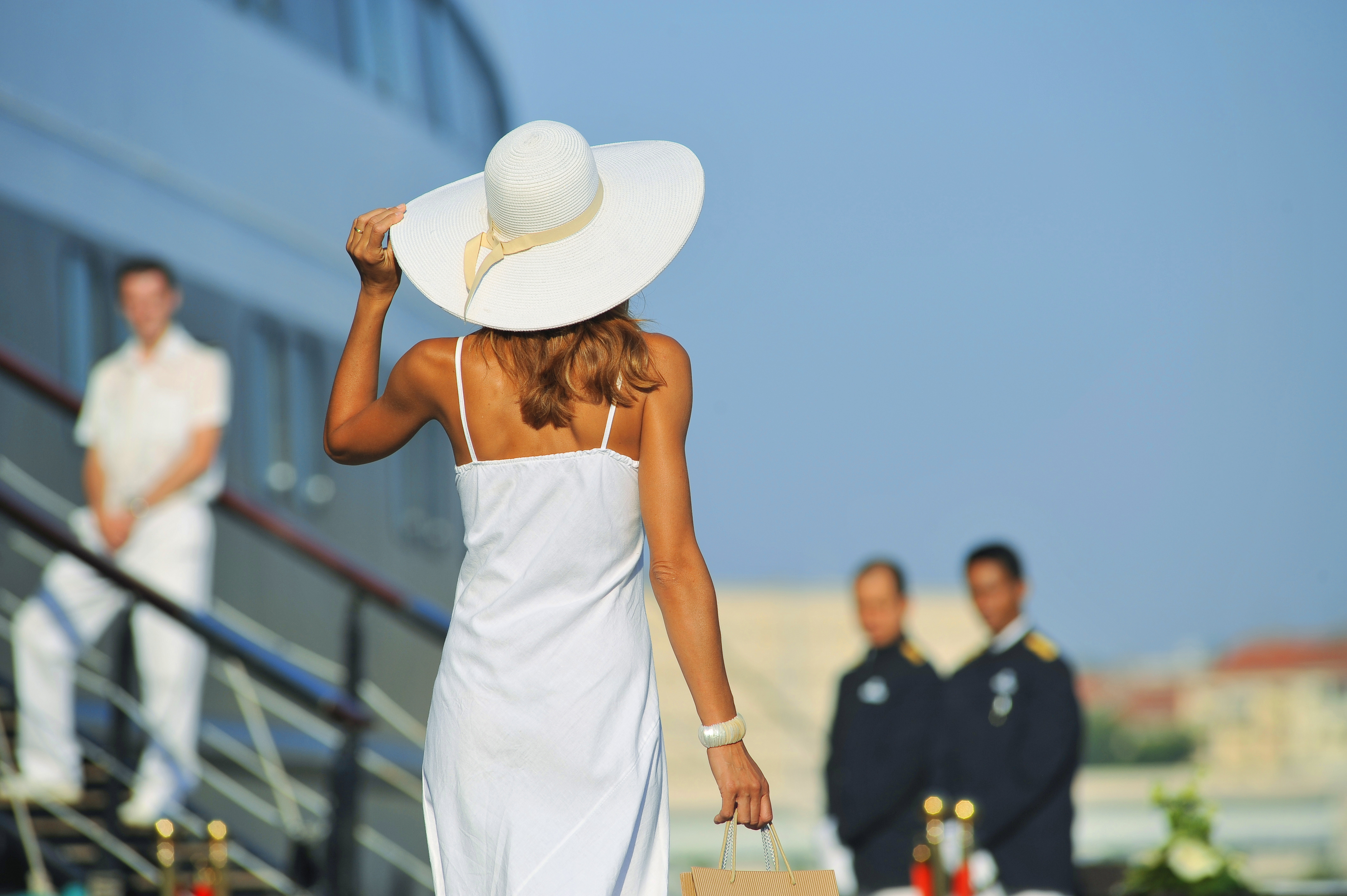
Excursions & land itineraries
Each itinerary has been thoughtfully created by our teams to offer you a complete excursion experience. You can discover the hidden gems of the regions you visit in line with your interests.

The Marina - Alizés Deck
- Two glass-bottomed kayaks
- Two stand up paddleboards
- Snorkelling equipment
- Fishing equipment
- Scuba diving equipment (for a group of four people)
- Saltwater swimming pool
- Small equipment for children (noodles, rings, armbands and safety equipment)
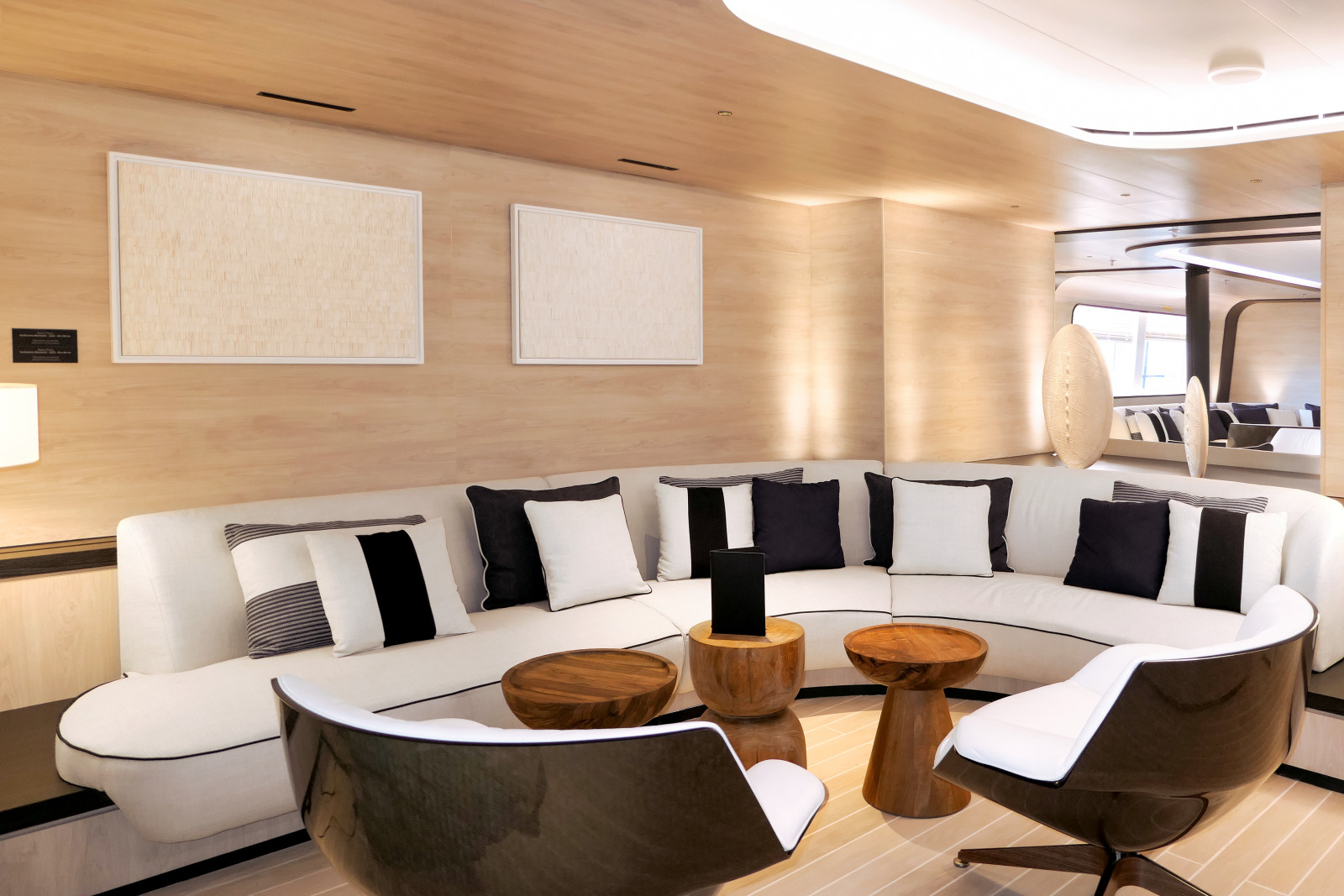
Emeraude Lounge and Bar - Alizés Deck
- Interior surface : 92 m²
- Seats 35 guests
- Exterior surface : 85 m²
- Seats 24 guests

Sun Deck
-
Sun beds
- Exterior bar available on special evenings only
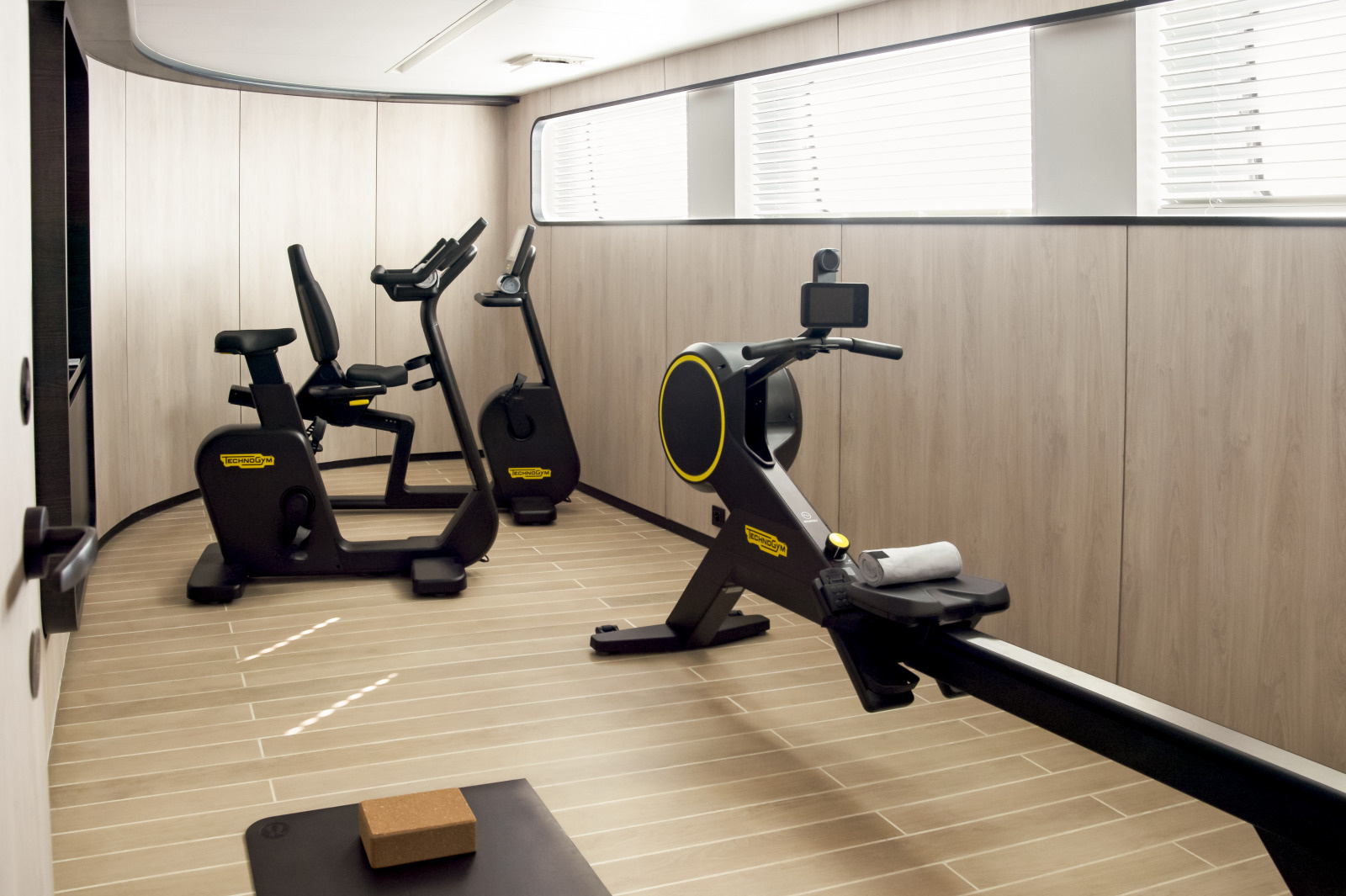
The Wellness Space
- Spa / massages (18.5 m²): one cabin offering massages and Biologique Recherche treatments
- Gym (16 m²) with dedicated fitness instructor
- Yoga sessions on the Sun Deck
Laundry
Your stateroom Officer will be able to take care of your laundry**. The washing and ironing of your clothes will take between 24 and 48 hours. Only ironing** can be delivered on the same day. As dry-cleaning is not possible on the ship, please only give us clothes that can be washed in water.
** These services are not free of charge and are billed directly to your stateroom account.
Smoking Policy
Closed spaces such as the lounges, the dining room, the staterooms and the reception are non-smoking areas. We invite you to smoke in designated outdoor parts of the ship.
Power Adapters
Adapters are provided on board, they are available at the reception office of our ships.
European Standard Sockets
The 220 volt 50 hertz alternating current is distributed by sockets meeting European standards. Onboard power is 200 volt AC (European standard) and 110 volt AC (North American standard). For safety reasons, hair irons and clothes irons cannot be used in staterooms. Please note that on Le Ponant, 110 volt AC is only available in stateroom bathrooms.
Age Restrictions
Children under one year of age shall not be authorised to embark on the ships.
For children aged between 1 and 8 years old, an authorisation to board the ship must be made in writing to PONANT. Subject to agreement, a liability waiver must be completed and returned to the company to validate the registration.
On classic cruises (“yachting”), children are accepted from the age of one, with a maximum of 5 children between 1 and 6 years old on board.
On “expedition” cruises children are accepted from 6 years old (except cruises aboard Le Commandant Charcot) and must be fully independent during all the outside activities organised and during disembarkation in rubber boats, be sufficiently tall to sit on the inflatable sides of the boats, and old enough to understand, and immediately respond to the orders given by the persons in charge. As a result, children’s participation in any activity in an inflatable boat shall be subject to the agreement of the Captain and of the Expedition Head, depending on the sea conditions, and the difficulty of disembarking at each location visited. The ships do not carry Parka’s in children’s sizes. Parents must arrange to bring a suitable Parka for children. In all cases, children and young people under the age of 18 are at all times on board or on land under the full and total responsibility of their parents or carers.
Children aged 4 years or more can be welcomed in the Kid’s Club when the service is offered on board
Languages
The crew are bilingual in French and English. All signage and announcements made are in French and English. On certain cruises, crew members also speak other languages.
Telephone
A satellite telephone system is at your disposal for contacting anyone, anywhere in the world. The cost of the call is added to the stateroom account (€6/minute). Calls that you receive can be transferred directly to your stateroom or to any other communal area on the ship. To receive or send faxes, please see Reception.
Wi-Fi
Free Wi-Fi internet access is available on all of our ships, in both the staterooms and the communal areas. One or several computers are at your disposal in the recreation centres. Please note that the Wi-Fi connection may be discontinued depending on the navigation area and landscapes that may block the vessel from satellite coverage, especially at high latitudes (no connection possible beyond 80° North or South), or for technical reasons beyond our control.
Medical Facilities
There is a doctor on board available to the passengers on all our ships:
- The schedules of consultation are listed each day in the log book (emergency consultation 24/7).
- The Sisterships, PONANT Explorers and Le Commandant Charcot also have a hospital for any small surgery.
- During the excursions, the passengers are accompanied by a doctor or a nurse.
- There is a fee for consultations on board . The price may vary according to the time and place of the consultation (hospital or staterooms). You must also pay for medications.
- The doctor on board is not authorised to distribute sick leaves and prescriptions. Only accounts and invoices are provided which may be used by the passenger to obtain a refund from his/her health insurance if his/her contract allows.
Medical Consultations
There is a charge for medical consultations undertaken by the doctor or nurse on board. The price can vary according to the time and place of the consultation (hospital or stateroom). Any medication must also be paid for by the passenger. If using medications on a regular basis make sure to bring adequate supplies for the duration of your cruise.
Special Medical Treatment
If you have any special treatment, we ask you to inform the reservation service when you register for the cruise, to note it on the information sheet before departure, then inform the on-board crew at the moment of departure and always keep your medication with you for the duration of the cruise.
Seasickness
Our ships (except Le Ponant) have stabilisers equipped with dynamic fins which adapt to the movements of the ship. This system allows the ship to anticipate and compensate for the pitching and tossing of the sea to achieve greater stability. Passengers suffering from seasickness will see their symptoms alleviated and are pleasantly surprised to not feel uncomfortable during their journey. However it is wise to bring travel motion medication with you for peace of mind.
Guests with reduced mobility
Our Sisterships, PONANT EXPLORERS and Le Commandant Charcot were designed for people with reduced mobility in mind:
- Specially designed staterooms;
- Access ramps allowing easy movement in communal areas;
- Posters, signage and stateroom numbers are translated into Braille.
Despite these arrangements, each passenger should be able to be independent or travel with a close family member or friend who can give them whatever assistance they require during their trip.
If a person has not been judged suitably fit for travel in complete safety, the company reserves the right to refuse their embarkation. Disembarkation in difficult places or in a Zodiac® is subject to the approval of the Captain, who will always have the safety and wellbeing of the passenger in mind.
Packing Tips
Technical Accessories
We advise you to equip yourself with a ski mask, sunglasses, walking poles (available to purchase in the shop), a waterproof rucksack, binoculars, a technical watch, a mosquito head net (for the Arctic) and a waterproof pouch.
Dress Code
We recommend wearing elegant, casual clothes at your discretion, and for the gala evenings, a cocktail dress for ladies and a shirt and tie for gentlemen, and a white or black-and-white outfit for the Officers’ evening. Shorts/Bermudas are not permitted in the evening in the gastronomic restaurants.
Sustainable Development
Sustainable development is enshrined in the company’s articles of association and has been at the heart of the PONANT project since its inception. Founded over thirty years ago by committed sailors, the company was born out of a desire to share a passion for the oceans and the treasures of the Earth. This responsibility commits us to a respectful dialogue with the environment and the populations we meet and to investing in many fields related to the preservation and development of the natural and cultural heritage of the polar and oceanic regions.
Clean Ships
We were among the first cruise operators in the world to abandon the use of heavy fuels, and our ships are equipped with electric diesel engines and SCR catalytic converters, which enable a reduction in fuel consumption and emissions. Our polar exploration ship, Le Commandant Charcot, is a hybrid-electric vessel, propelled by liquefied natural gas (LNG). LNG enables a 25% reduction in carbon emissions, an 85% reduction in nitrogen oxide emissions and a 95% reduction in fine particle emissions. Each time we design a new ship, we equip it with the latest available eco-technologies, enabling us to maintain our position as the cruise industry’s environmental leader, ahead of international regulations in some areas. A commitment recognised by many independent organisations:
- Our entire fleet is Clean Ship certified by the Bureau Veritas. This certification guarantees that our ships fulfil very precise criteria: emissions levels, waste processing, waste water etc.
- In 2020, PONANT was recognised as “the cruise operator with the greenest fleet in the world in terms of airborne emissions” by the German NGO, NABU.
- PONANT was awarded the Prix des Palmes du Tourisme Durable 2020 (Prize for Sustainable Tourism) in the “Voyage” category for the elimination of heavy fuel oil in favour of LS MGO.
- In 2019, PONANT became the first European cruise company to obtain the North American Green Alliance certificate. This certifies that its members have adopted practices and technologies that are respectful towards the environment.
- PONANT is also a signatory of the Charte Bleue from Armateurs de France, which commits the maritime sector to act to protect the marine environment.
Wastewater
All of the wastewater is treated by means of processes that exclude the use of chemical products. The recycled water is used to clean the exterior of the ship. The water that is discharged into the sea is treated, drinkable water.
Waste
We have optimised our organisation in order to reduce waste at the source. Waste is nonetheless still produced on board. As of 2020, 60% of this is sorted and recycled, with an objective of 85% set for 2023. We ensure the complete traceability of this waste.
Single-use plastics
We have eliminated the use of single-use plastics (straws, cups, food serving trays, laundry bags etc.). A metallic flask is issued to each passenger on expedition cruises and water fountains are available in the common areas of the ships. We are also developing the bottling of our water in glass bottles.

Deck 5
- Sun Deck
- Jacuzzi
- Bar

Deck 4
- Le Diamant Restaurant
- Suite

Deck 3
- Marina
- Emeraude Lounge
- Reception
- Welcome Lounge
- Spa
- Fitness
- Beauty Area
- Suites/Staterooms

Deck 2
- Medical Centre
- Suites/Staterooms

